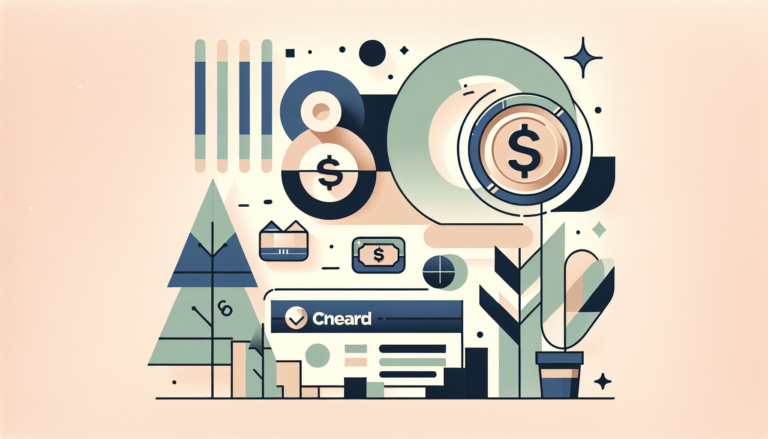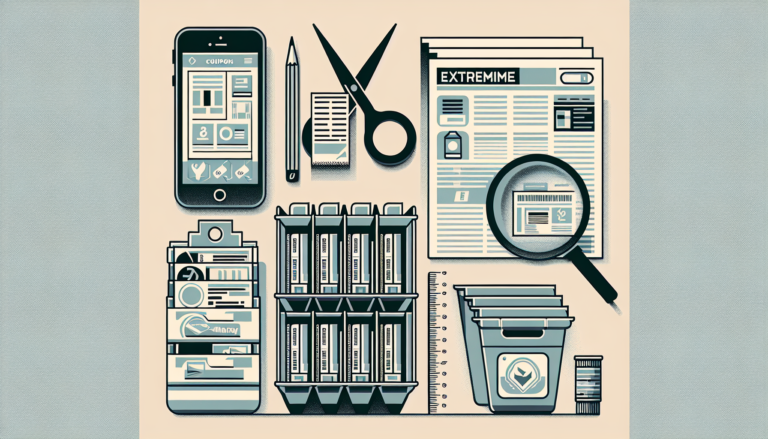Avoiding Crisis Mode: Proactive Steps for Saving Money for Emergencies
Establishing an Emergency Fund
Sock away some cash like your future depends on it! An emergency fund is your financial security guard on standby, ready to swoop in when life’s curveballs start flying.
Importance of Emergency Savings
Think of emergency savings as your financial shield. It’s there to help you dodge the nasty surprises like surprise medical bills, car breakdowns, or that dreaded pink slip. Experts say having half a month’s living expenses or $2,000 stashed away (whichever’s bigger) is a smart move. For bigger bumps in the road, aim for a fund that could see you through 3 to 6 months of expenses (Vanguard).
With buzzing predictions of a recession looming over 2024 (Bankrate), a solid emergency fund isn’t just nice; it’s a sanity saver!
Setting Savings Goals
Dream big, but start small when filling up that rainy day fund. Experts nudge you to kick things off with $1,000 for the immediate “Oh no!” moments, like an unexpected job loss. Got kids or big bills? You might wanna hoard a bit more – think up to 6 months’ worth of living expenses.
| Savings Goal | Recommended Amount |
|---|---|
| Essential Expenses | $1,000 |
| Half a Month’s Living Expenses | $2,000 or more |
| Minimum Emergency Fund | 3 to 6 months’ worth of expenses |
Stick to these tips, and you’ll be ready to face whatever financial messes come your way. Swing by our piece on how to start an emergency fund to build that stash from scratch.
Stashing away cash in a separate savings account means you’ve got a financial superhero ready to tackle those unexpected expenses. Less debt, more peace of mind. For extra know-how on juggling these funds, check out our emergency fund savings tips.
Saving Strategies
Stacking up those rainy day dollars takes a bit of grit, but with the right approach, anyone can build a tidy backup stash for those “oops” moments. Here’s a playbook to get that emergency safety net sorted out.
Creating a Savings Habit
Making saving a no-brainer part of your routine can really pad out that emergency fund. Try setting a regular slice of your paycheck aside each month. For example, if you’re living on $2,000 a month, aim to tuck away $1,000. Sure, it’s a tall order, but even starting with less can beef up your savings over time.
| Monthly Cash Inflow | Ideal Savings Target |
|---|---|
| $2,000 | $1,000 |
| $3,000 | $1,500 |
| $4,000 | $2,000 |
A good habit turns saving into second nature, buffering you from surprise pitfalls.
Managing Cash Flow
Keeping an eagle eye on where your money goes helps make room for savings. Check out your monthly cash dance to spot where you can dial back. Shuffling less important purchases to the back can free up change for your financial cushion. And hey, there’s always a budgeting app or a good old spreadsheet to help keep tabs.
Leveraging One-Time Opportunities
When that unexpected cash bonus or tax refund graces your account, it’s your sign to boost savings. Plopping these windfalls straight into your emergency fund gives it a hefty shine without messing with your daily budgeting groove.
Automatic Saving Methods
Silver lining alert: Automation can majorly ease the savings grind. Setting up regular transfers from your checking to savings account means no more missed opportunities to save. Watching funds glide seamlessly into savings helps keep your budget rolling with minimal effort, and adjusts as your wallet does.
| Account Type | How Often | Suggested Savings Chunk |
|---|---|---|
| Savings Account | Monthly | 10% of Income |
| Checking Skim to Savings | Weekly | $50 |
Employer-Based Saving Contributions
Check in with good ol’ HR about any workplace perks that could help pad your safety net. Some jobs let you shuttle cash from your paycheck right into savings buckets or retirement funds, which is a smart way to let employer offerings boost your funds.
Want more tips on saving and managing those hard-earned dollars? Visit our guides on emergency fund savings tips and how to start an emergency fund.
Optimal Amount for Emergency Fund
Figuring out exactly how much you need in your rainy day fund is a step toward keeping your financial boat afloat during life’s unexpected squalls. The aim is to be ready for those surprise bills or income bumps in the road.
Determining Your Savings Goal
So, how do you figure out how much to stash away? First off, take a hard look at what you spend every month and think back on any surprise expenses you’ve faced before. Some smart folks suggest having enough set aside to cover three to six months of your living costs. This acts like a comfy pillow when life throws you off balance, like losing a job or dealing with a major financial hiccup. Unsure about how to get the ball rolling? Try saving either two weeks’ worth of your expenses or $2,000—go with whatever number’s bigger. That’s a nice place to start.
| Monthly Living Expenses | 3 Months’ Savings Target | 6 Months’ Savings Target |
|---|---|---|
| $2,000 | $6,000 | $12,000 |
| $3,000 | $9,000 | $18,000 |
| $4,000 | $12,000 | $24,000 |
| $5,000 | $15,000 | $30,000 |
Remember, what works for one person might not suit another. Take stock of your past surprises, and adjust your plans accordingly. Maybe your home’s acting up like a temperamental old car or you’ve had health scares—factor these in when planning.
Guiding Principles for Usage
Your emergency fund is like a seasoned firefighter—ready to jump into action when there’s real trouble, not just a spark. Stash it in something that earns a little interest but you can still reach quickly, like a high-yield savings account or a money market account (Wells Fargo).
Here’s how to be smart with it:
- Decide what counts as an emergency, be it an ER visit, busted water heater, or pink slip.
- Keep this fund in its own account, so you won’t dip into it for everyday splurges.
- Re-evaluate every so often as your life or expenses change to keep it to-date.
Stick to these nuggets of wisdom, and you’ll be better set for whatever life throws your way. For more ways to save, check out emergency fund savings tips or start learning how to get your fund going with how to start an emergency fund.
Choosing the Right Accounts
Let’s talk about socking away money for a rainy day—or more formally, setting up an emergency fund. Picking the right nest egg for this purpose is all about easy-peasy access and letting that money quietly multiply. So, let’s look at some places to stash that cash: high-yield savings accounts, certificates of deposit (CDs), and why some investments are just a no-go.
High-Yield Savings vs Checking Accounts
Starting with a heavyweight match: high-yield savings vs your regular checking account.
| Account Type | Interest Rate (Average) | Ease of Use | Good for Emergencies? |
|---|---|---|---|
| High-Yield Savings | 0.50% – 1.00% | Convenient | Yep |
| Checking Accounts | A flat 0.01% – 0.04% | Super Handy | Nope |
High-yield savings accounts are like a warm cookie for your money—giving just the right blend of growth and accessibility. Plop your emergency funds in here, and watch them swell a bit, yet be right there when life throws a curveball. Meanwhile, sticking that cash in a checking account is like putting it in a couch cushion; kinda there, but just gathering dust and crumbs. Experts say it’s not the ‘in-case-of-emergency-break-glass’ choice.
Pros and Cons of CDs
Then you’ve got those CDs, offering some major pros and cons for keeping that emergency stash:
| Pros | Cons |
|---|---|
| Juicier interest rates | Ouch, early withdrawal fees |
| Stable and settled terms | Not-so-grabby accessibility |
| Safe as a buy-one-get-one | Might hit a dry spell |
CDs buy your funds a cozy, interest-packed snooze, but think before you lock away your rainy-day money. If you decide you need those funds earlier than planned, beware of the penalties keeping your piggy bank squealing. They’re a solid fit for funds you can park for a bit, but don’t expect to use them for break-glass-now emergencies.
Avoiding Risky Investments
Let’s also dodge those risky investments like stocks or mutual funds for this pot of gold. Tempting as the glitz might be, the last thing you need is being in a bind because your stocks tanked the moment your car transmission went poof.
Think of it like a lifeboat—you need it to inflate on demand, not spring a leak. The safest bets remain those high-yield accounts, money market accounts, or secure-as-a-vault government-backed securities. This way, when life’s hiccups come knocking, your funds are steady and at the ready. For further ways to pump up your fund, check out our emergency fund savings tips.
Keeping Your Fund in Reach
You gotta have your cash within arm’s length when life throws a curveball. Here’s the scoop on some top-drawer accounts for your stash of rainy day cash and the low-down on how they keep your money snug and let you get at it when you must.
Online Savings & Money Market Accounts
When you’re stashing away for that “just-in-case” scenario, online savings against money market accounts are like your dream team. They’re rocking that FDIC or NCUA badge, protecting your dough with government-backed insurance, plus they offer interest rates that don’t just sit there, watching inflation gnaw at your dollars. Accessing your money is easy-peasy, but not too easy—you’ve got those six-times-a-month withdrawal caps keeping your impulse buys in check but being a lifesaver when things get hairy (Bankrate).
| Account Type | FDIC/NCUA Insurance | Interest Rate | Withdrawal Limit |
|---|---|---|---|
| Online Savings | Yes | Competitive | Up to 6/month |
| Money Market Account | Yes | Competitive | Up to 6/month |
FDIC & NCUA Coverage
Your hard-earned money gets wrapped up in a cozy safety blanket, thanks to the FDIC and NCUA. Both keep an eye out for your funds at banks and credit unions. Let’s talk numbers: these protectors got you covered up to $250,000 greenbacks per depositor, for each legal account type. It’s a relief, knowing your cash is safe even if the bank decides to call it a day.
Withdrawal Tactics
Limits on grabbing your money might feel like you just got grounded, but trust us, there’s method in that madness. Having the rule of “six maximum outings a month” keeps the nest egg intact for the real alarms, not for the “my favorite brand just launched a new shoe” fake emergencies. Break the rule, and it’s fee city, so best be saving that drama for actual crises (Bankrate).
Stick to what works: pop your emergency funds into accounts that keep them close and safe. Steer clear of riskier playgrounds—things like mutual funds or stocks might leave you wringing your hands in the middle of a financial storm (Wells Fargo). Make sure your strategy writes the playbook on easy access and you’ll be the master of emergency fund management.
Enhancing Financial Security
Beefing up your money smarts isn’t just about squirreling away cash; it’s also about picking the right insurance and managing your savings like a pro. This part digs into making sure your rainy day fund gets a boost from insurance cover, why having a stash is a big deal, and how to bounce back after you’ve dipped into it.
Complementing with Insurance Coverage
Insurance is like your financial bodyguard when surprise expenses come knocking. Having the right coverage can be a game changer, saving your emergency savings for the real rainstorms. Think about it: health, car, and home coverage can ease the burden of doctor bills, car fixing, or home repairs. Turns out, Fidelity says the right insurance can make a huge difference, letting you keep that rainy day fund for what it was meant to be—unpredictable crises.
| Type of Insurance | Purpose |
|---|---|
| Health Insurance | Takes care of medical bills |
| Auto Insurance | Steps in for car repairs and damages |
| Home Insurance | Covers mishaps to your house and stuff in it |
Importance of Financial Reserves
Having a stash of cash on hand is clutch when life throws curveballs. Just emergency savings sometimes won’t cut it, especially when big bills pop up. Studies show that without such back-up, folks tend to lean on credit cards or loans during money emergencies (Bankrate). This reliance can snowball into heaps of debt, making it tougher to bounce back.
Setting up a smart reserve strategy can shield you from financial hiccups. Different pots for savings—like fun trips, house fixes, or schooling—can keep things organized. By spreading your savings, you manage money flow better, without messing with your emergency stash.
Rebuilding After Usage
When you do tap your emergency fund, having a get-it-back plan is a must. Rebuilding it isn’t a set-it-and-forget-it deal; it takes focus and some tactical moves. Here are ways to pump it back up:
| Method | What It Does |
|---|---|
| Set Up Automatic Transfers | Funnels some of each paycheck straight into the fund for steady savings. |
| Identify Spending Cuts | Scan your monthly bills and trim the fat to save more cash. |
| Use Windfalls Wisely | Direct bonuses, tax wins, or surprise money straight to your emergency stash. |
Setting rules on when to dip into the savings can also help. Smart strategies can curb unnecessary raids and foster good saving habits. It’s important to weigh your financial footing before reaching for the fund, keeping borrowing and high-interest debts at bay (NEA Member Benefits). For more ways to bulk up your emergency money, take a look at our guide on emergency fund savings tips.
By carefully exploring your insurance picks, setting the spotlight on cash reserves, and having a plan for quick recovery, folks can boost their financial security and dodge those pesky high-interest debts.







